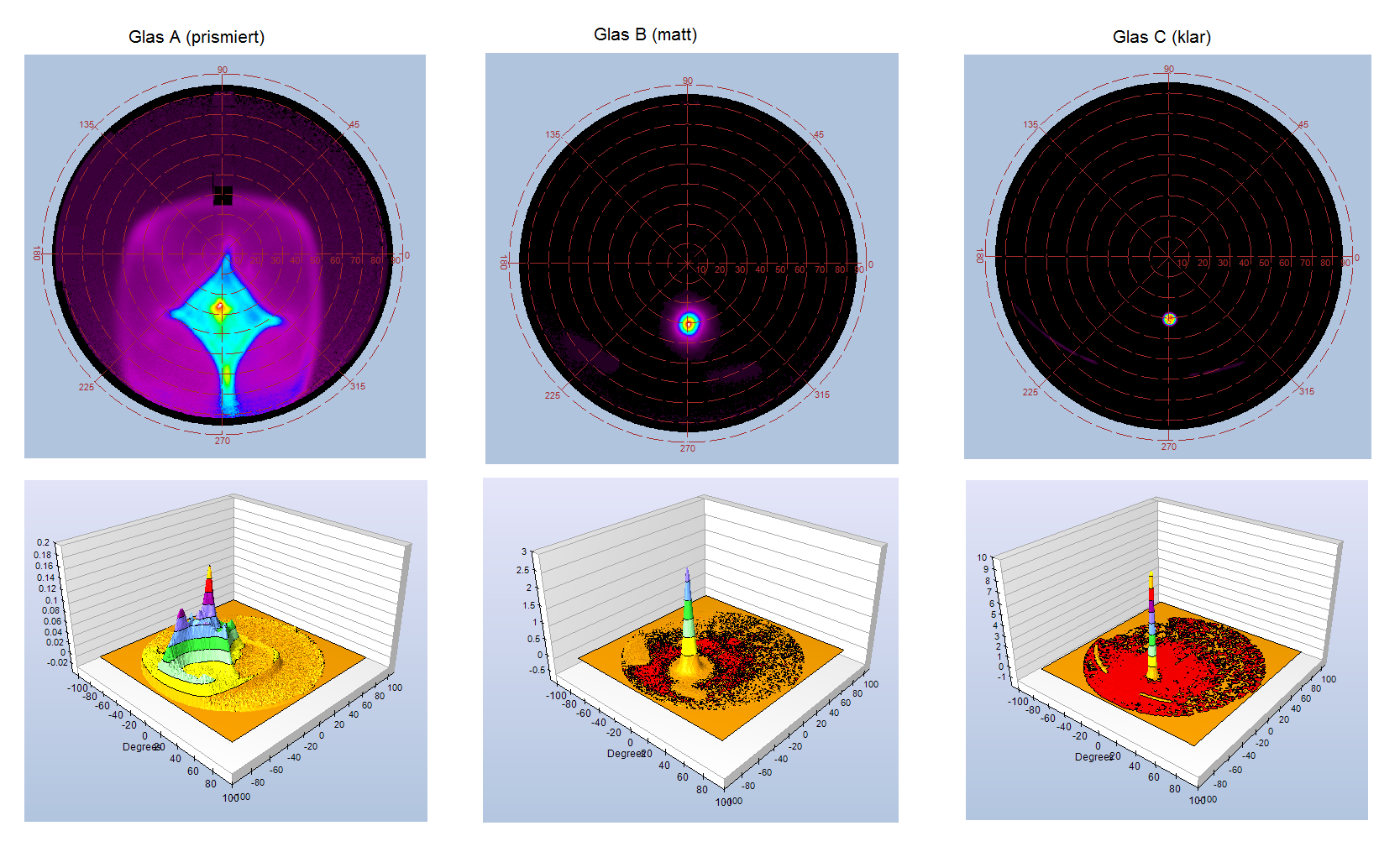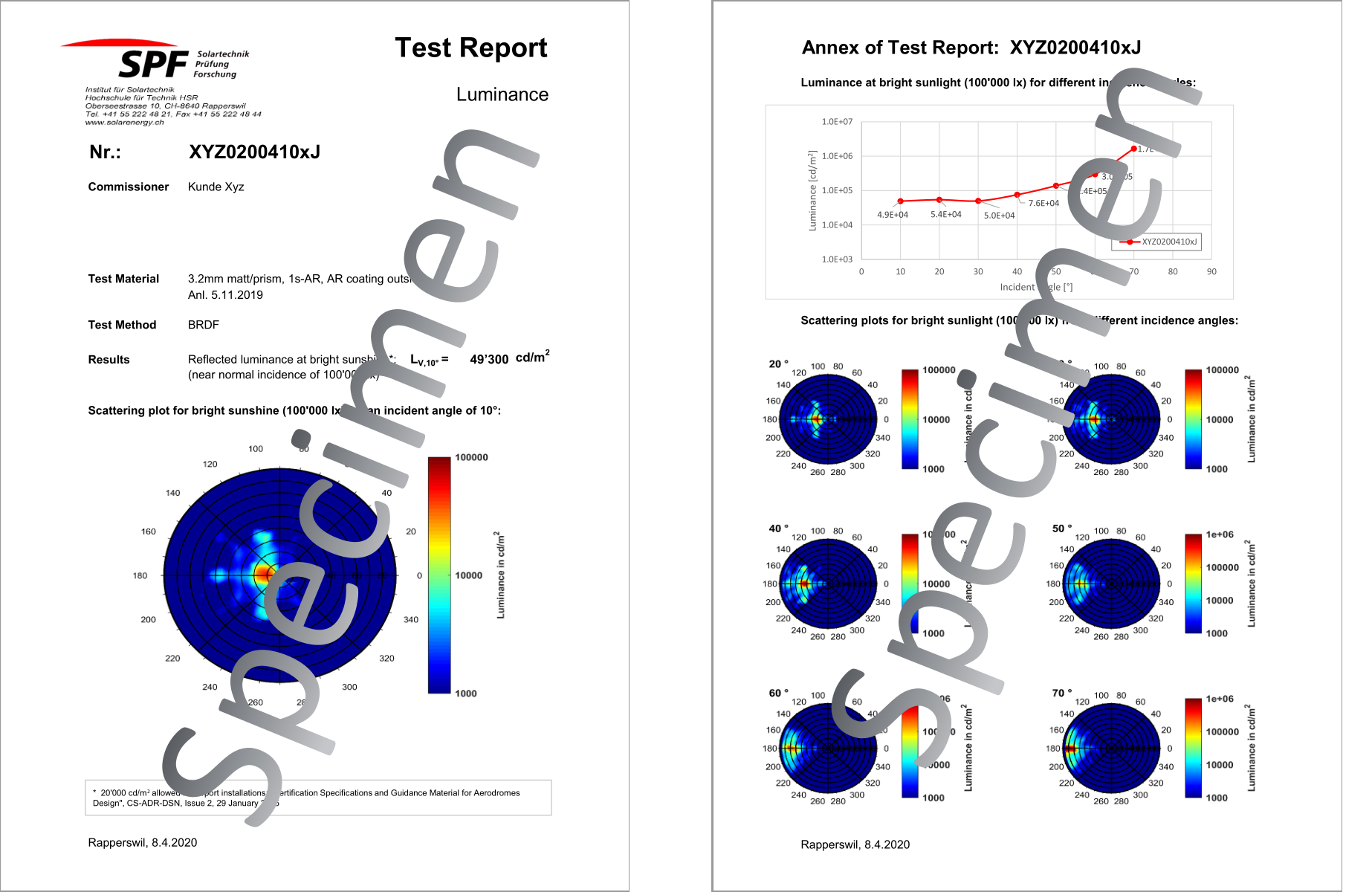SPF Testing – Reflection Behavior – BSDF
The optical reflection behavior of a surface is described with the Bidirectional Scattering Distribution Function (BSDF). With this measurement, the glare behavior of any surface can be fully characterized.
Bidirectional Scattering Distribution Function
Every material surface reflects incident light. This effect can vary greatly. Accordingly, such reflections can also be perceived as disturbing to different degrees. In order to have comparable figures available for such discussions, SPF operates a measurement facility for determining the optical scattering behavior of any material surface.
The BSDF provides a three-dimensional image of the reflection effect at a selectable, defined angle of incidence on the surface. In the following, three different glass samples are shown which are exposed to the same solar radiation under identical conditions. Due to their different surface structure, the reflection is also clearly different.
The glass on the left is prismatic, it scatters light very broadly, but the intensity of the reflection is very weak at any viewing angle.
The glass on the right is clear float glass, it hardly scatters, acting like a mirror. The reflection is very clear, but only at a narrow angle.
The glass in the middle has a matte surface and shows a moderately strong reflection with moderate scattering.
The BSDF measurements on these glasses give the following results:
(upper row: in polar coordinates, lower row: three-dimensional; angle of incidence 30° each).
The term Bidirectional Scattering Distribution Function (BSDF) stands for scattering in general. The measurement differentiates between reflection effects (Bidirectional Reflectance Distribution Function, BRDF) and transmission effects (Bidirectional Transmittance Distribution Function, BTDF).
We can offer both with the SPF, for angles of incidence in the range from 10 to 70°.
Specimens ranging in size from 100 x 100 mm to approx. 2500 x 2000 mm can be measured. For BRDF measurements on transparent samples, a light trap can be used as an option. This eliminates the reflection at the second boundary layer, quasi the «inner» material surface. This then corresponds, for example, to a glass pane which is laminated together with PV cells using EVA to form a module.





